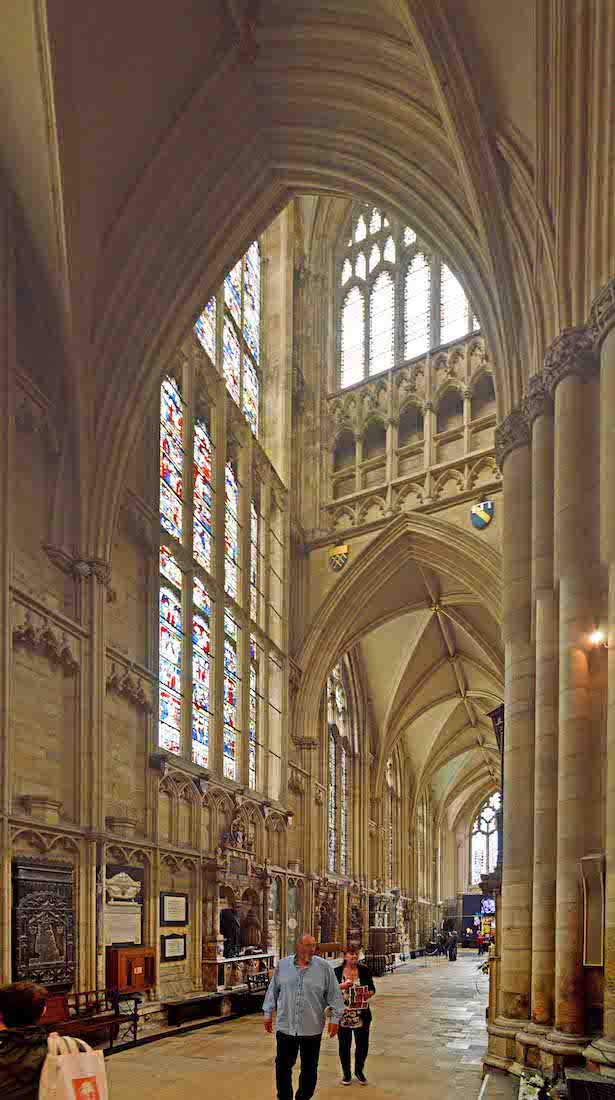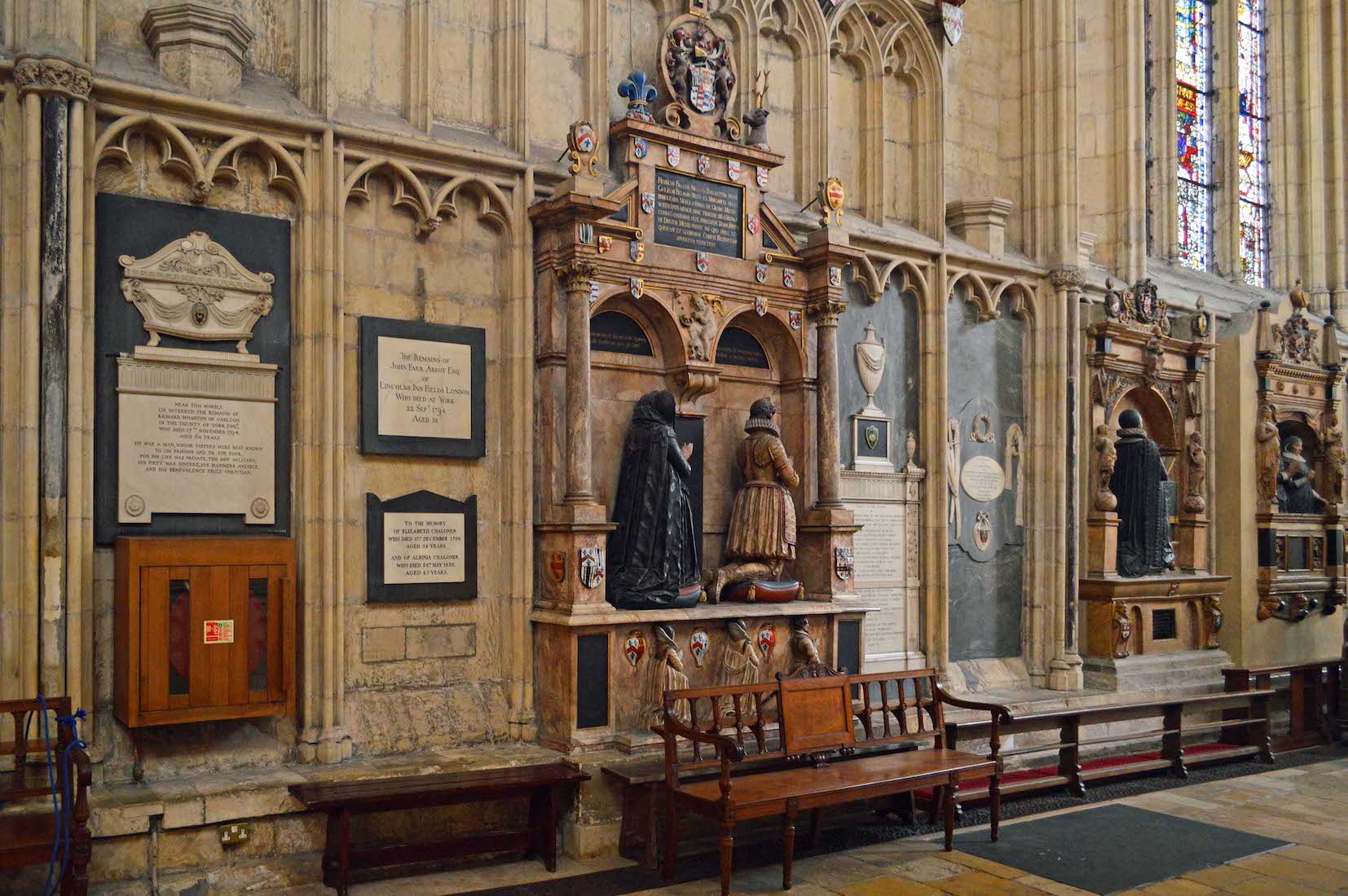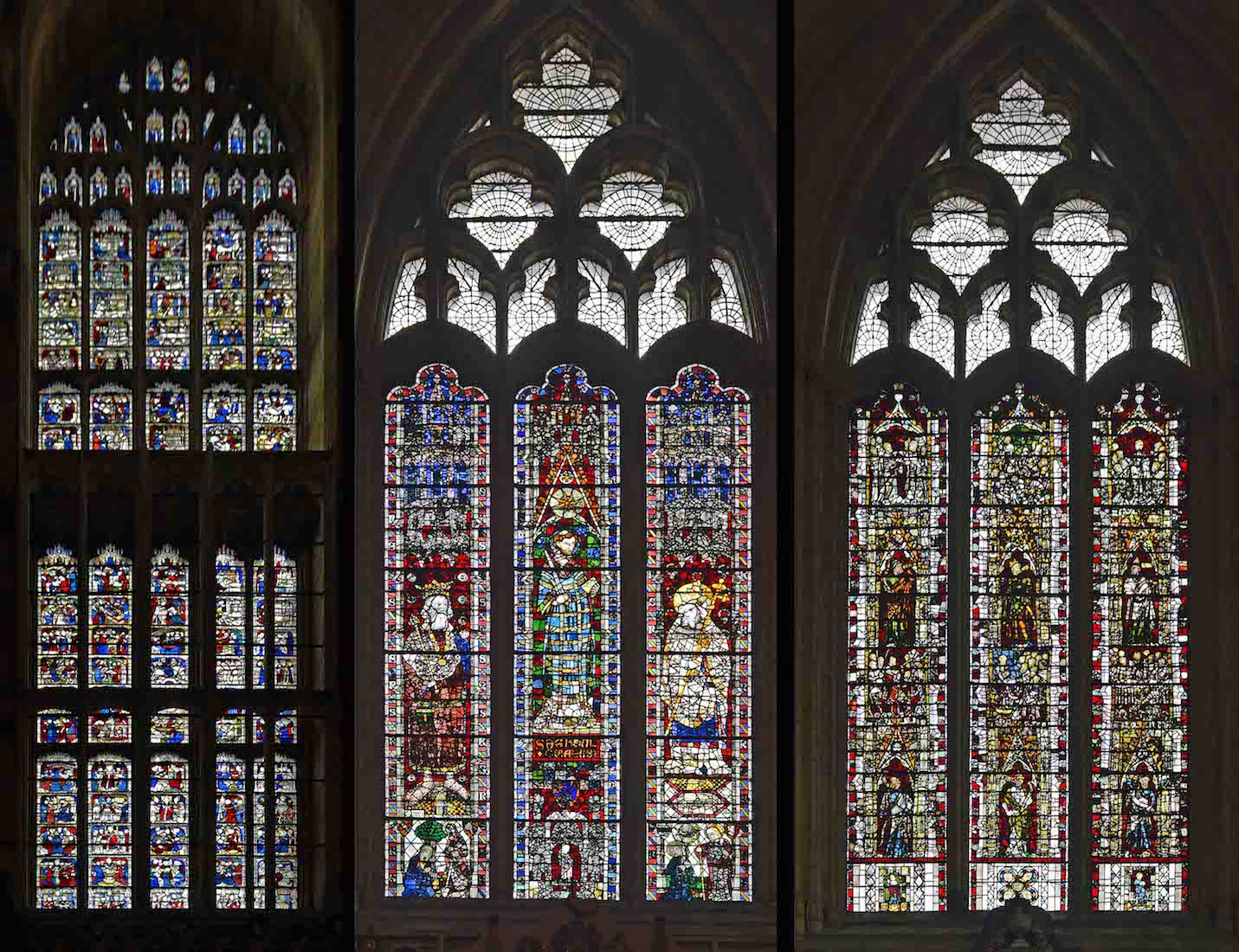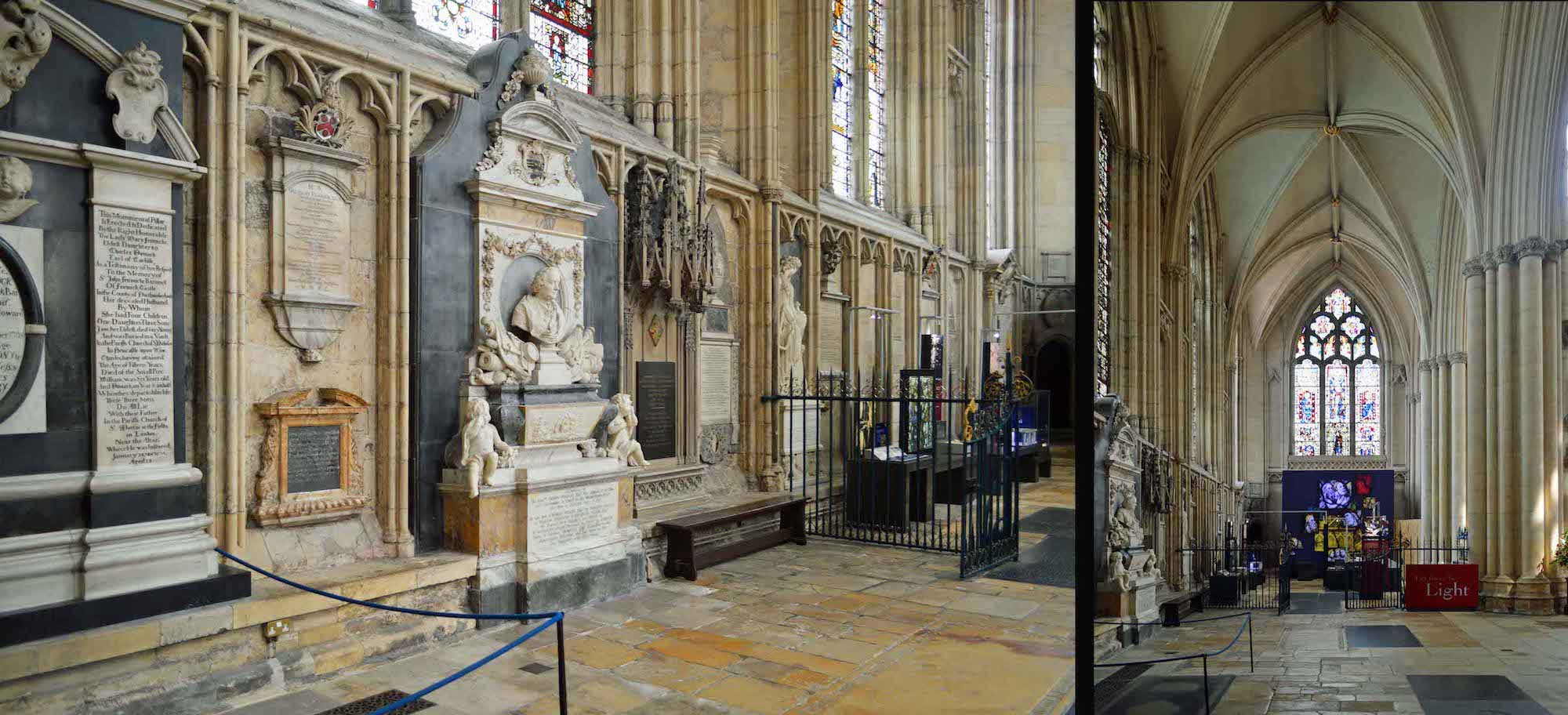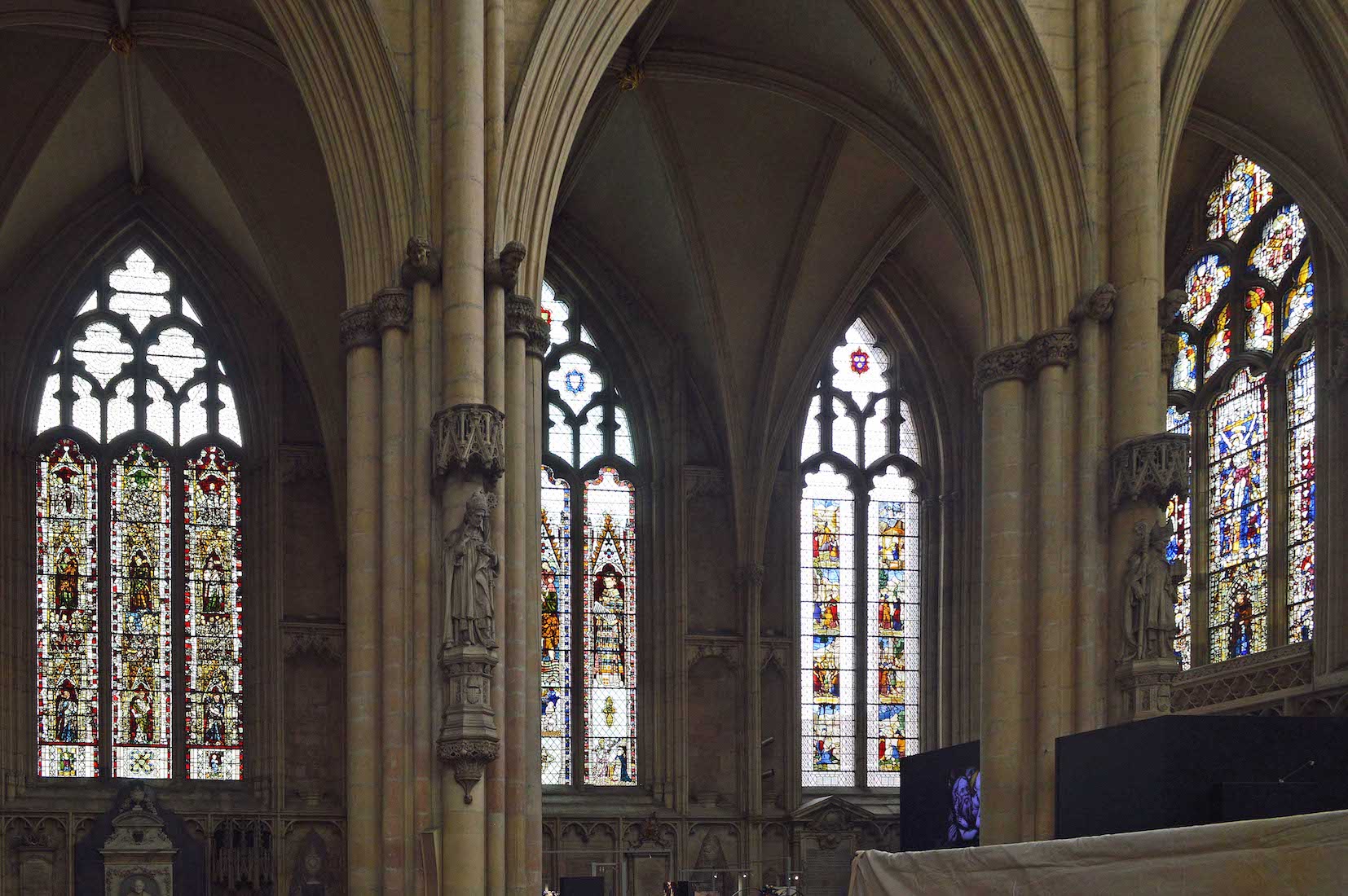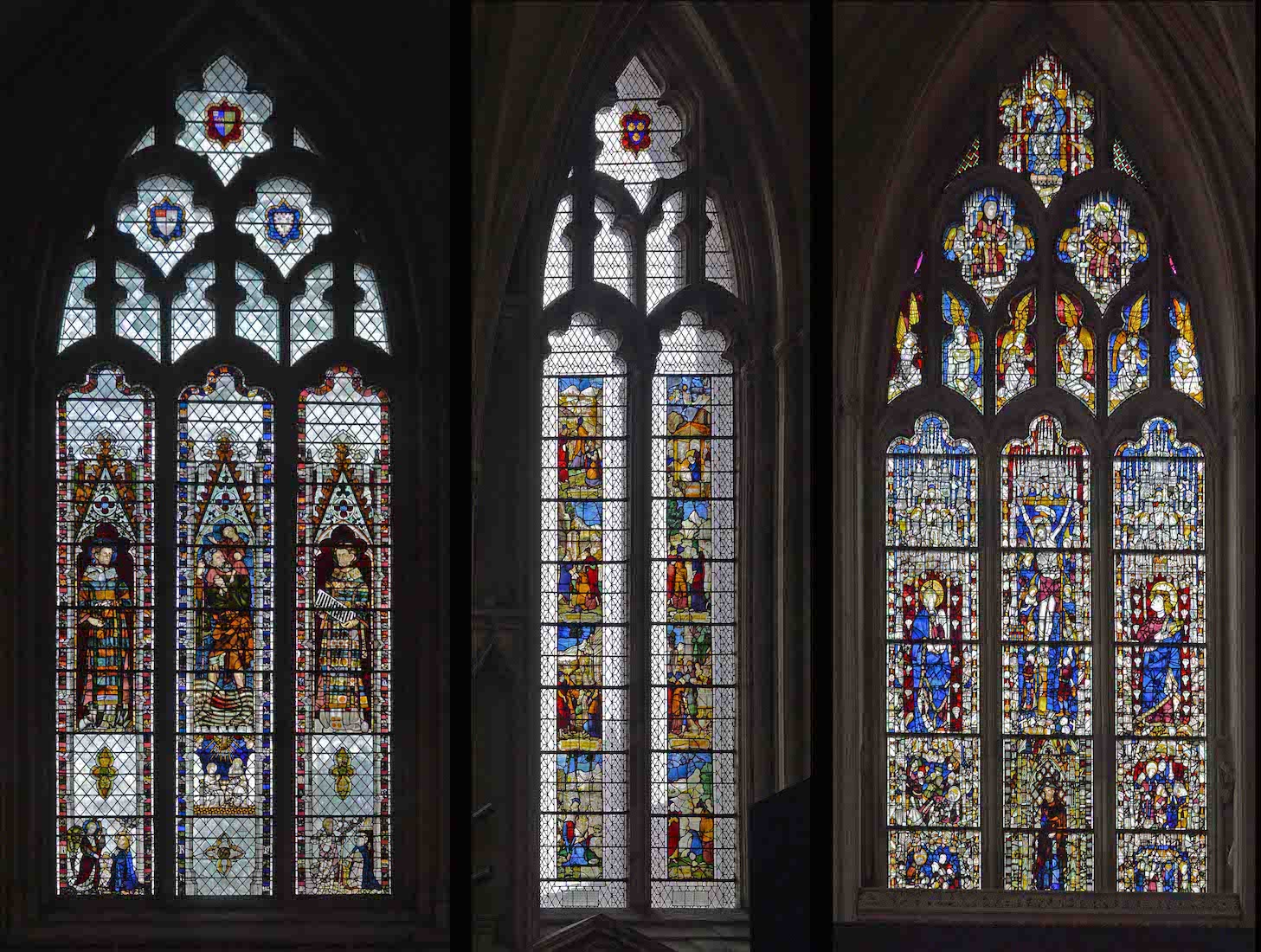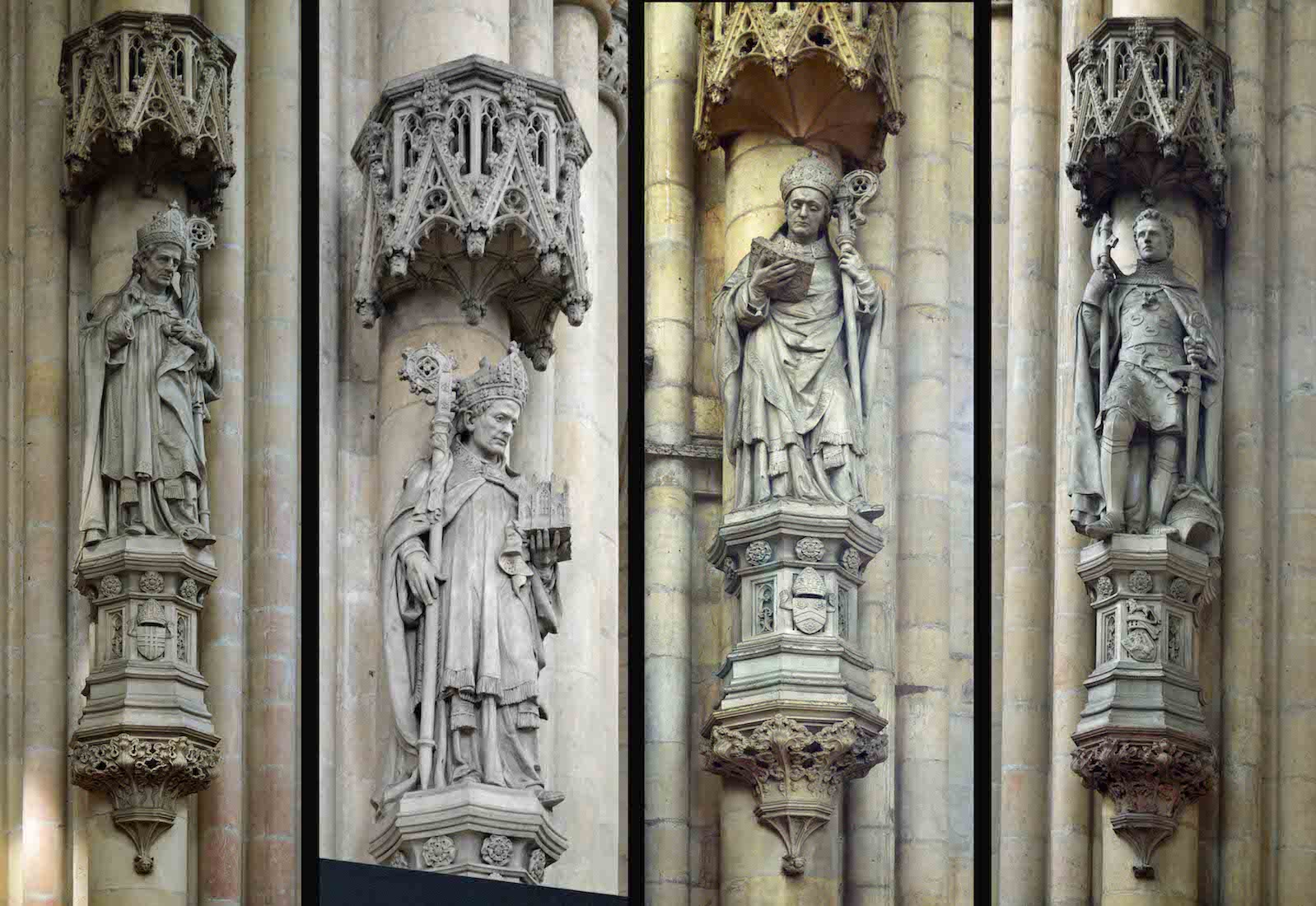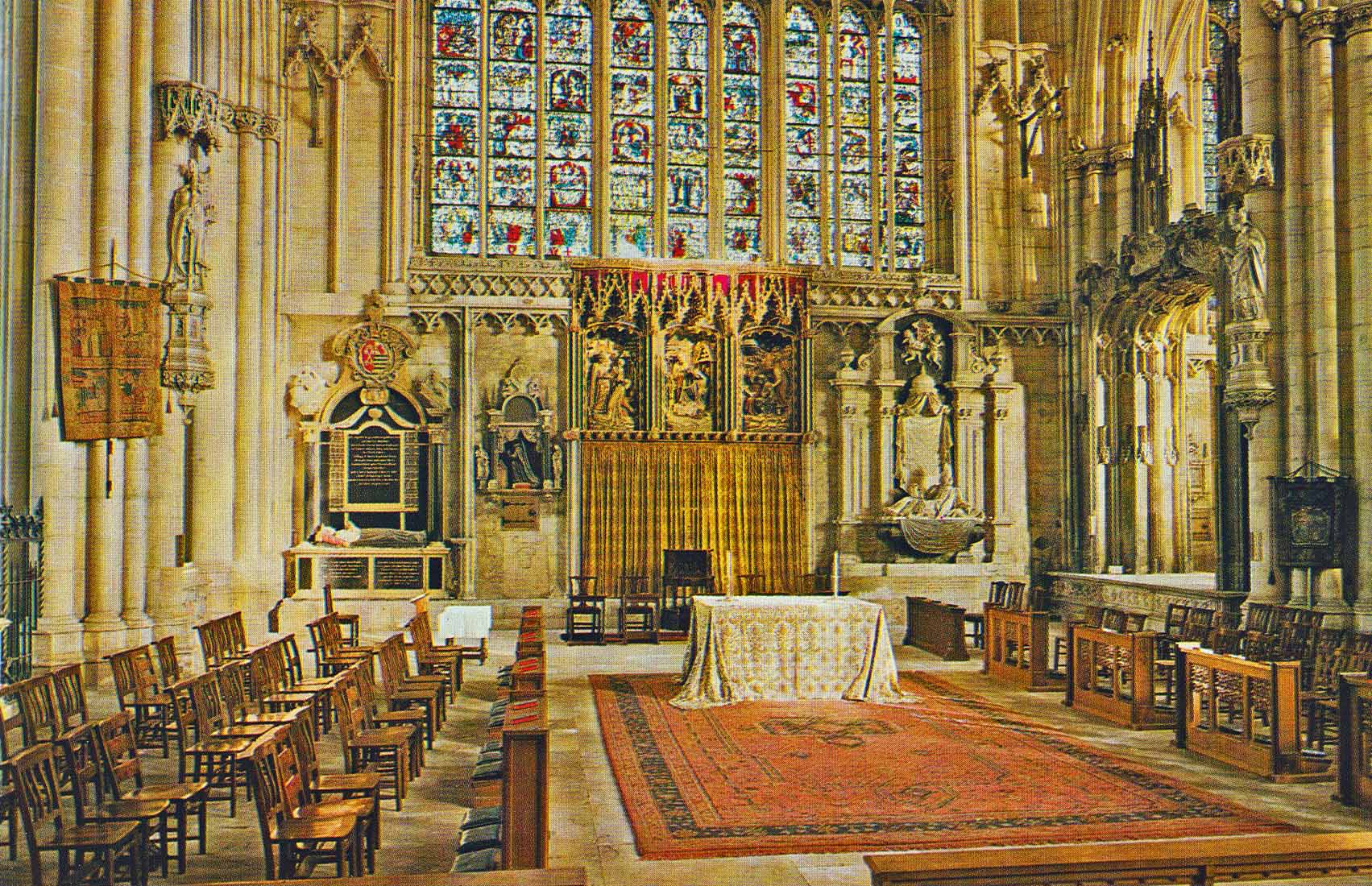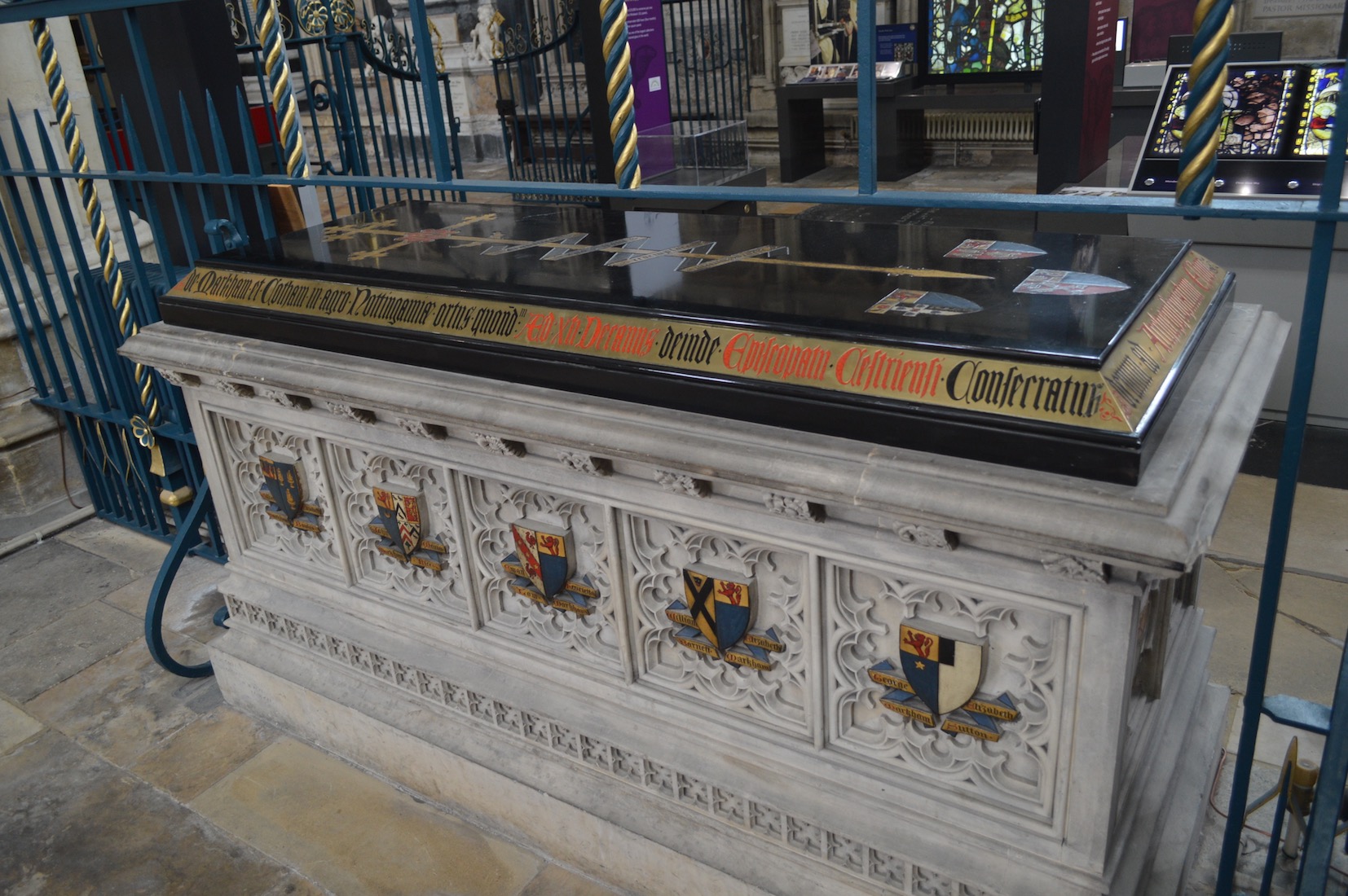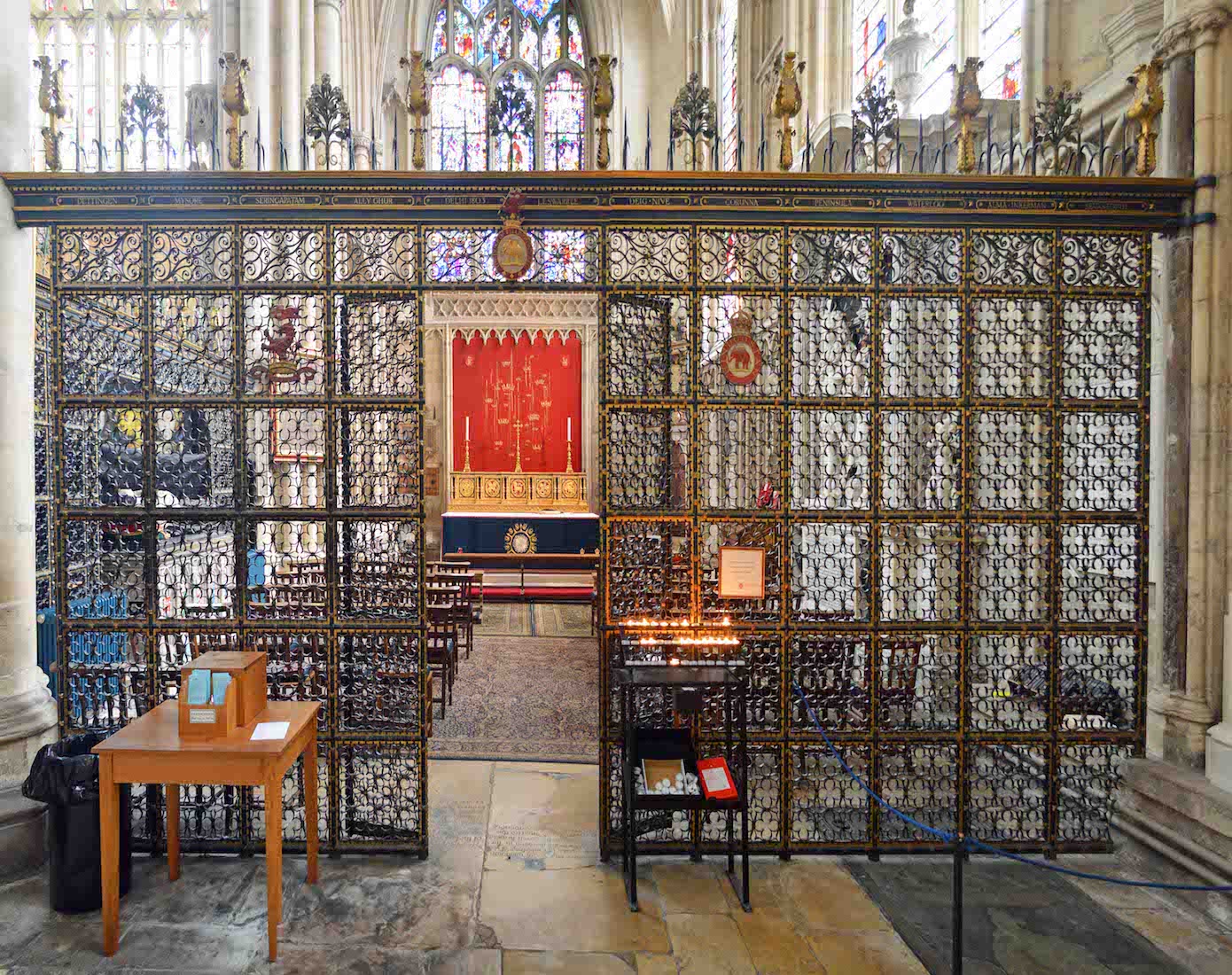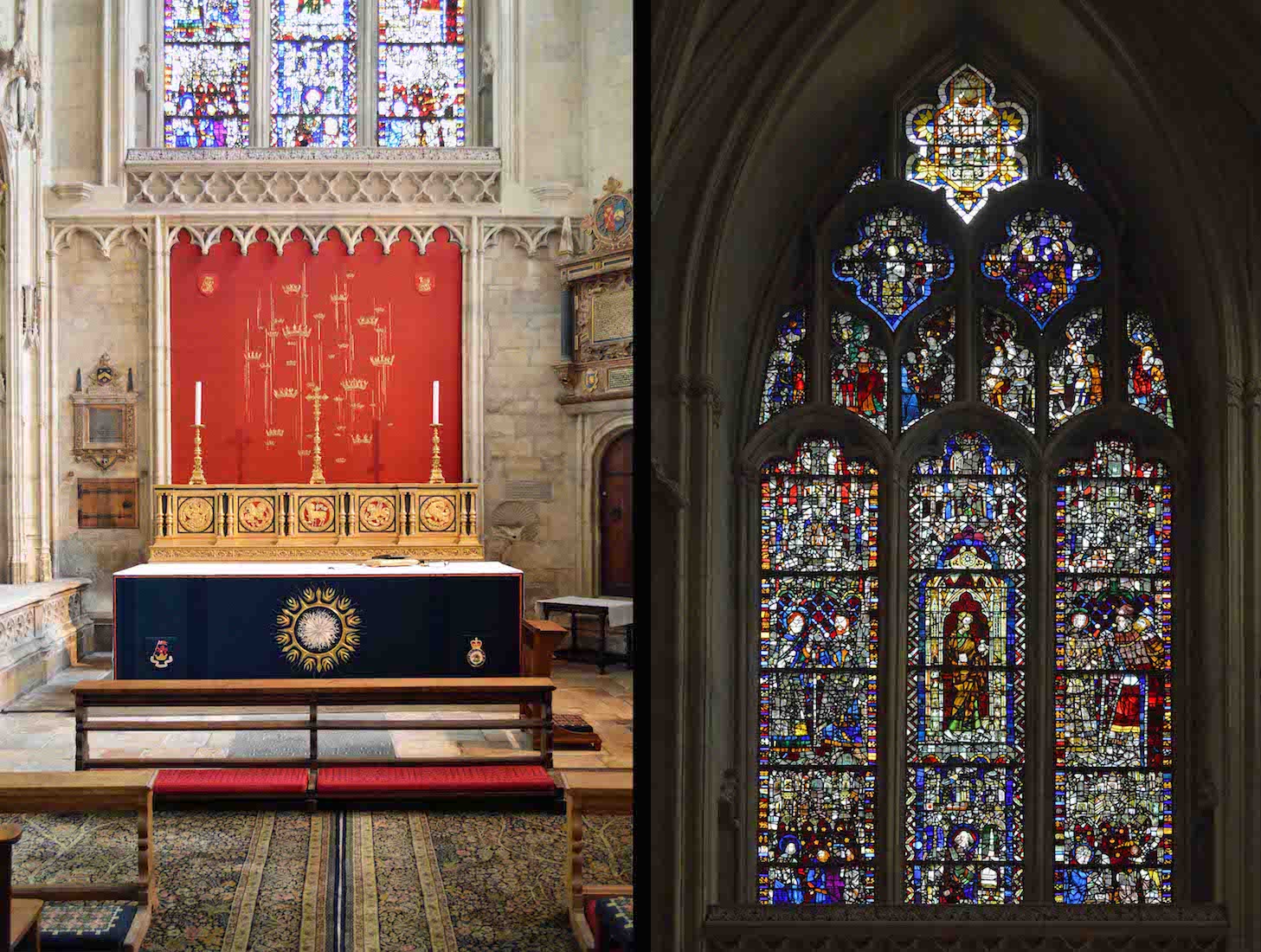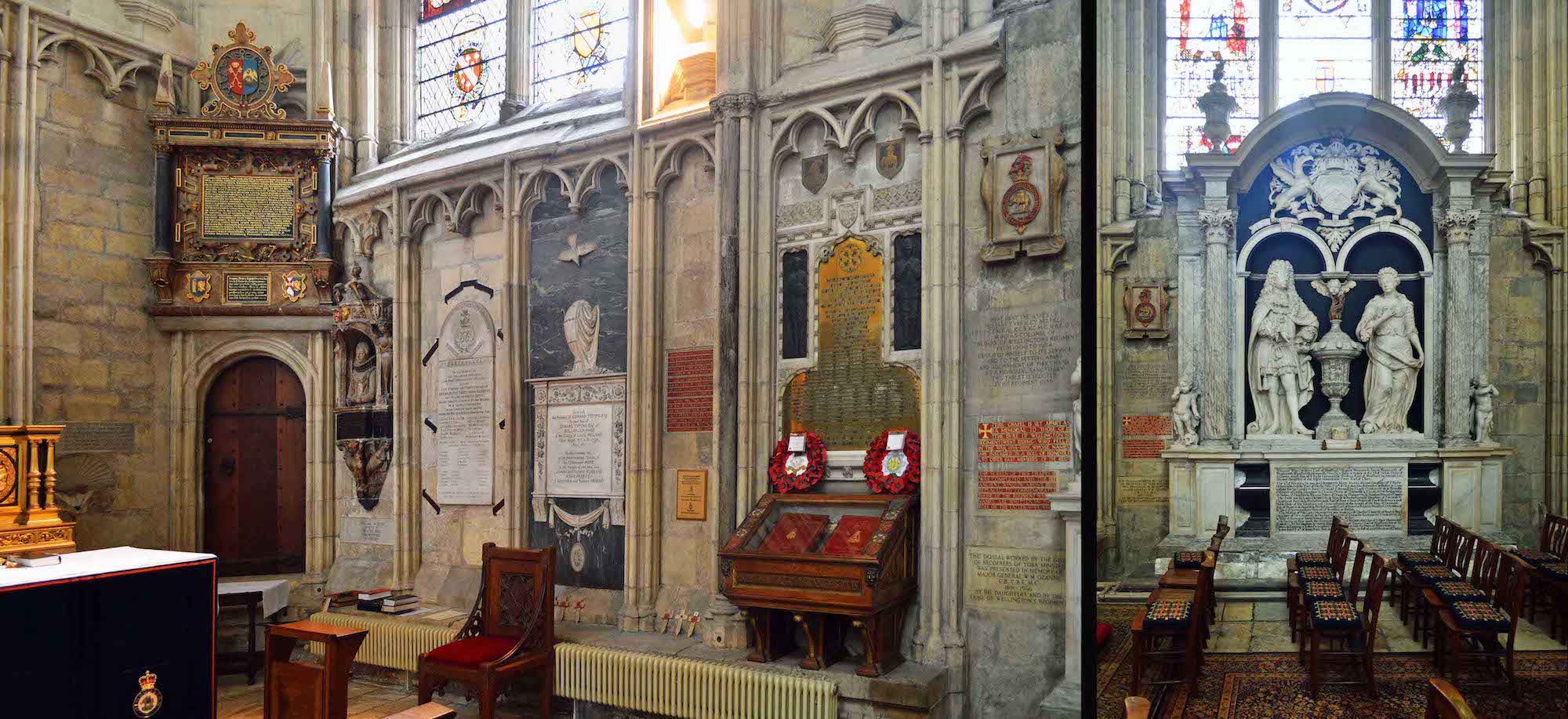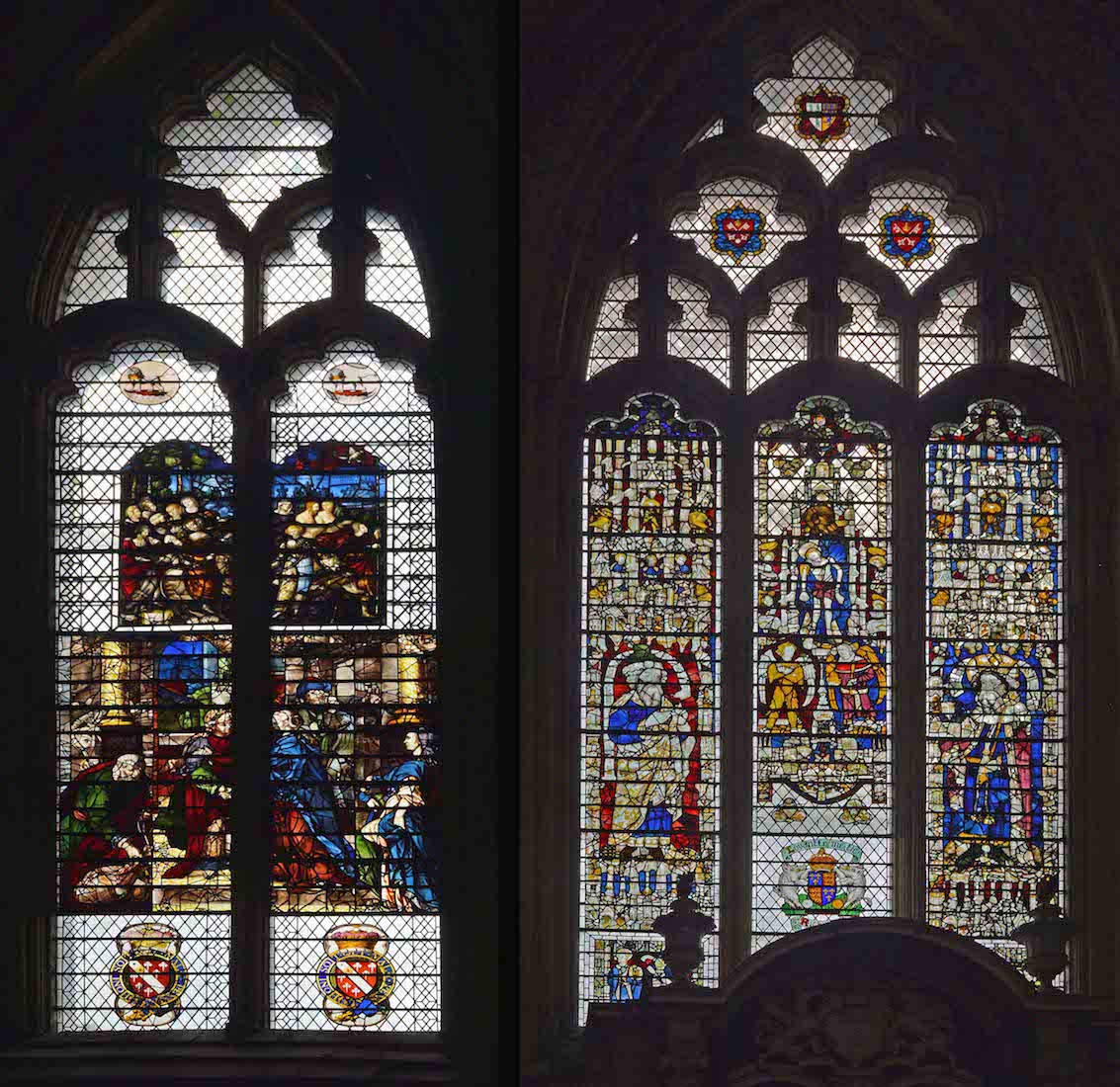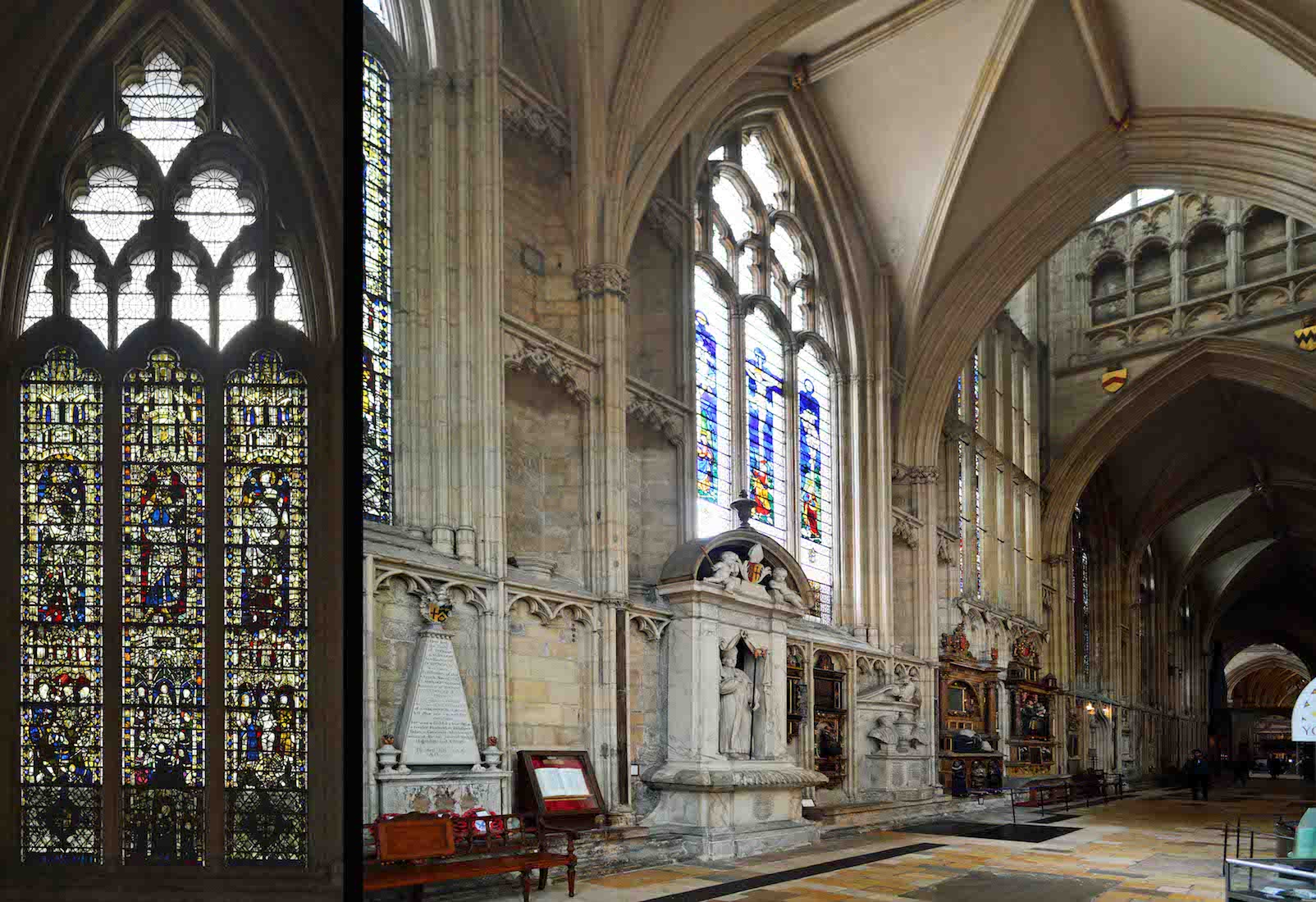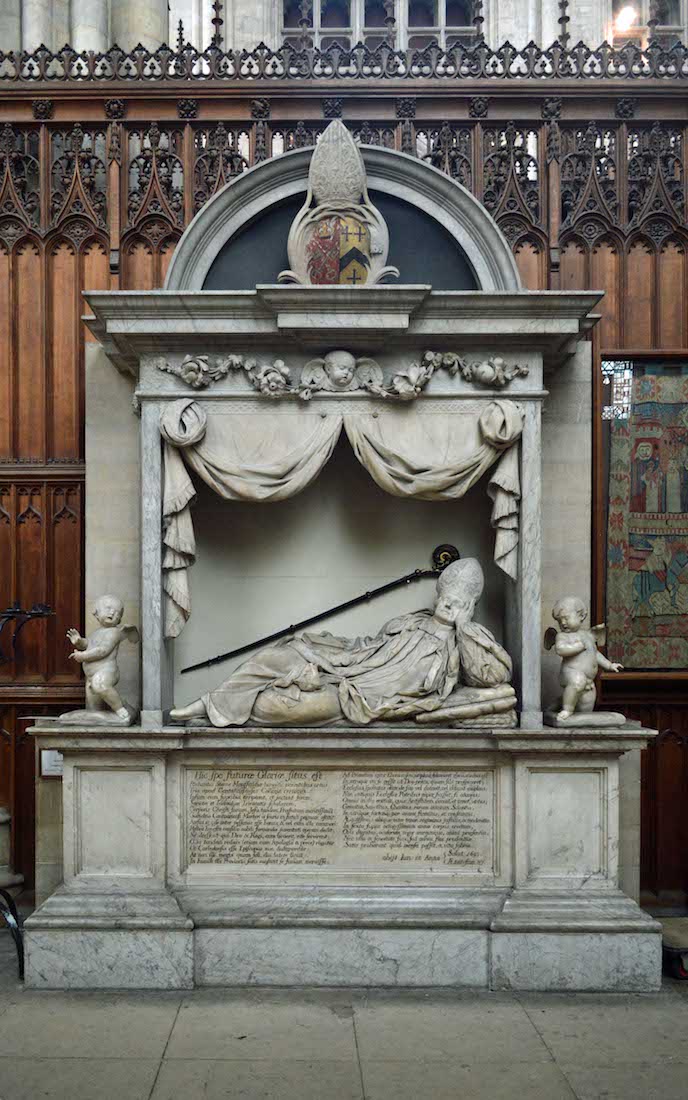
On the South side of the aisle is this memorial to Richard Sterne. Sterne (c. 1596–1683) was a Church of England priest, and Archbishop of York from 1664 to 1683. He is said to have been one of those who assisted in revising the Book of Common Prayer in 1662. PLAN
82. NORTH QUIRE AISLE WINDOWS
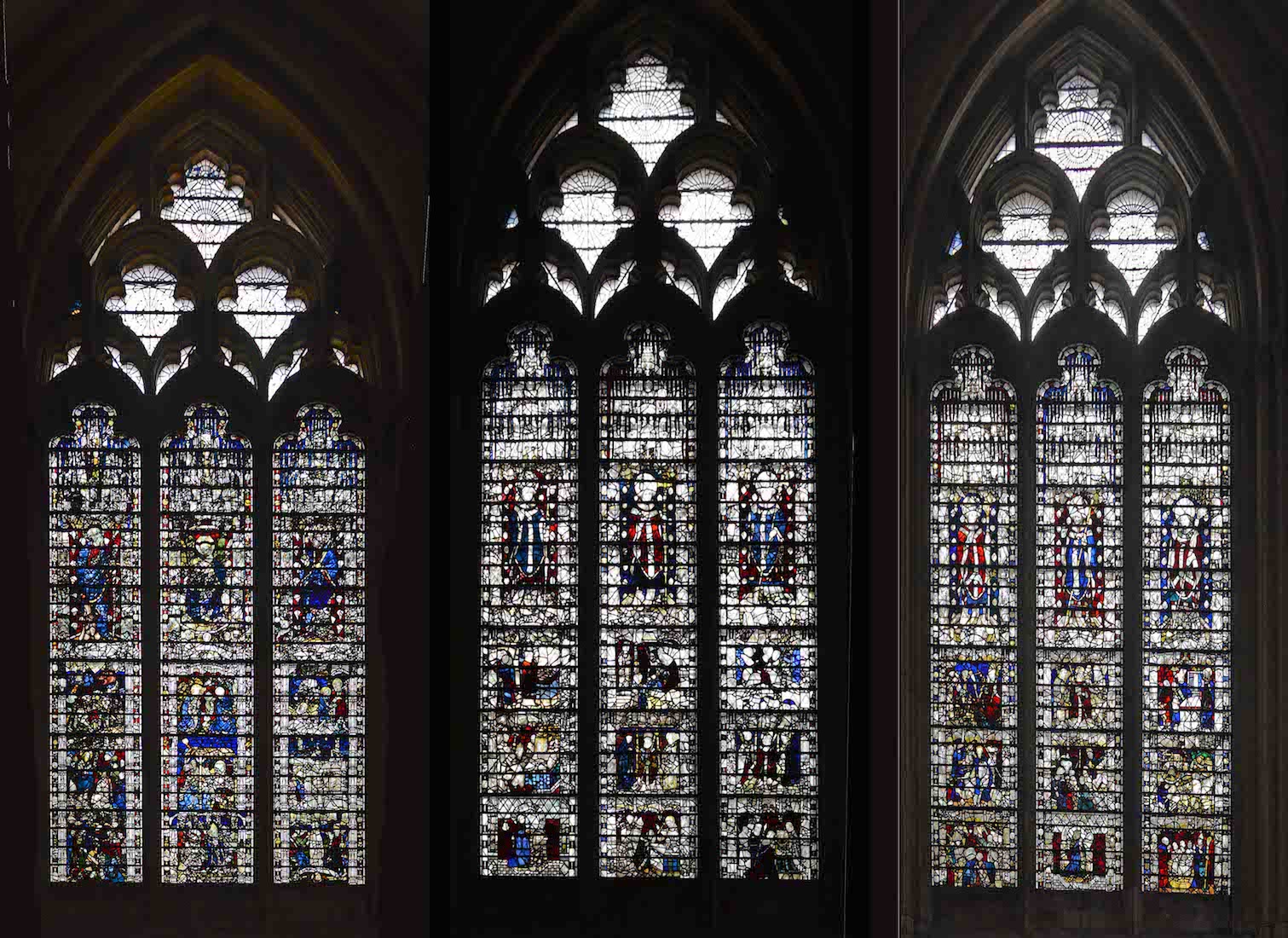
The parade of medieval windows continues – all very detailed and hard to interpret! The window at right shows St Chad, St Paul, St Nicholas across the top, St Chad and the stag (centre left), and St Nicholas rescuing three boys (bottom right).
83. UTILITIES ENTRANCE
These little passageways lead to the Minster Police, the First Aid Station, Lost Property, and Toilets. A set of pipes is mounted by the door at right – or are they batons?!
84. NORTHEAST TRANSEPT
Proceeding along the aisle we come to the Northeast transept with its greater height and extra light. We shall look more closely at the window shortly. Make a note of the items on the wall here: it will help our navigation as we make our way further up the aisle.
85. NORTH WALL CONTINUED
At the centre is a memorial to Sir Henry Belasyse, 1st Baronet (1555–1624) and his wife Ursula Fairfax. Sir Harry was an English politician, son of Sir William Bellasis of Newburgh Priory and educated at Jesus College, Cambridge. He married Ursula, the daughter of Sir Thomas Fairfax of Denton, Yorkshire. .
86. NORTH QUIRE NAVE WINDOWS
The window at left is dedicated to the life and miracles of St William of York. The St William window was made c.1414 as the gift of the Ross family of Helmsley, and members of the family kneel reverently at the bottom of the window.
87. AISLE SOUTH WALL
We turn to look at some items of interest on the South wall. From left we have • the Rockingham memorial, in memory of The Hon. Thomas Watson (1665 – 1723) (later Watson-Wentworth, the third son of Edward Watson, 2nd Baron Rockingham) • entry to the crypt, and • the Savage Chantry: Thomas Savage was Archbishop of York 1463 – c.1507.
88. TOWARDS ST STEPHEN’S CHAPEL
As we come to the end of the North Quire aisle, we are led into the more spacious ‘East End’ with its three chapels. Ahead is the first of these chapels – St Stephen’s Chapel.
89. NORTHEAST WINDOWS
Standing back we see the four windows in this corner. We have already looked at the window at left. Notice too the sculpted figure on the column – one of four such figures.
90. THREE WINDOWS
Here we see the final two windows on the North wall, and the window to St Stephen’s Chapel. The C14th window at left shows In the main lights: St Stephen (L), St Christopher (C), St Lawrence (R). The narrow window shows seven scenes of the Life of St James and a Nativity panel. The window at right depicts the Crucifixion with Mary and John.
91. FOUR SCULPTED FIGURES
The four main columns supporting the East End of the Cathedral each have a sculpted figure. These are not easily identified, but three are bishops.
92. EAST WINDOW
The Great East Window is now undergoing conservation in the workshops of the York Glaziers Trust. It was completed by the Coventry glass Painter John Thornton in 1408. The window contains probably medieval Europe’s largest depiction of the Apocalypse – the end of the World. The right view shows the window before conservation began.
93. QUIRE CLERESTORY WINDOWS
Above our heads in the high clerestory windows of the quire (c 1420), the gallery of historical figures continues. The windows depict the kings, popes and archbishops of greatest significance to the history of the Minster and its part in the evangelisation of the north of England. The shields of arms of those who contributed to the cost of the windows appear beneath the figures. .
94. WILLIAM MARKHAM TOMB
On this visit, the St Stephen's Chapel and the central Lady Chapel were disrupted because of the conservation work on the East window: I will have to come again! However between the Lady Chapel and the Southern All Saints Chapel stands this tomb of William Markham. William Markham (1719 –1807), was an English divine, who served as Archbishop of York from 1777 until his death.
95. ALL SAINTS CHAPEL
The All Saints Chapel is entered through a doorway in an ornate grill. Looking carefully we can see the Markham tomb on the left with a framed painting(?) beyond.
96. CHAPEL NORTH WALL
Standing in the All Saints Chapel and facing North we see once again the Markham tomb, temporarily protected from behind. On closer inspection, it appears that the frame may hold a portion of a regimental colour – of a regiment which served in India?
97. CHAPEL ALTAR AND WINDOW
The All Saints Chapel altar is very smart in red and gold and navy blue. The red reredos is decorated with many gold crowns. The window is fragmented and contains only a few original heads. The glass is nevertheless interesting and relates to St John. Also included is St James, and St Edward the Confessor who gave his ring to St John (disguised as a beggar).
98. CHAPEL SOUTH WALL
We look to the South wall of the Chapel. In the corner is one of those fascinating cathedral doorways asking to be explored! To the right is another Remembrance Book, the red wreaths indicating a record of war casualties. And further right is the Memorial to William Wentworth, 2nd Earl of Strafford (d. 1695) & Lady Honoria (d. 1685). William was a member of the House of Lords.
99. ALL SAINTS CHAPEL SOUTH WINDOWS
The All Saints Chapel is the Chapel of the Duke of Wellington’s Regiment. The window at left is the Easternmost window on the South wall. It has been constructed using panels taken from other windows. The adjacent window carries the motto ‘Loyaulté me lie’ (Loyalty binds me) of Richard III (Richard of York) who was a king of England during the Wars of the Roses.
100. SOUTH QUIRE AISLE
The next window on the South wall (at left) is another colourful mix of medieval glass, but with clear spidery panels at the top. We look West along the South quire aisle, noting the impressive monuments on the left wall.



